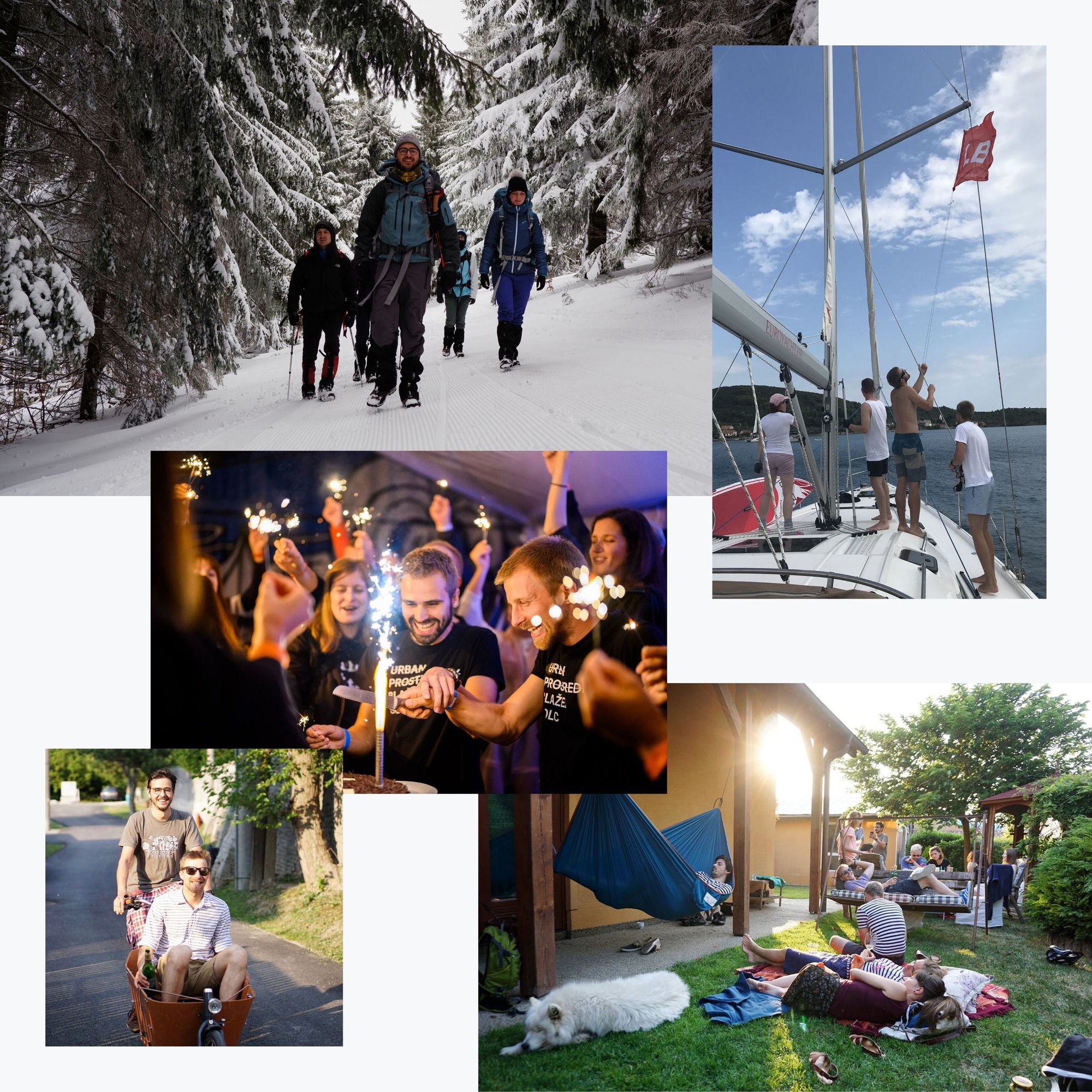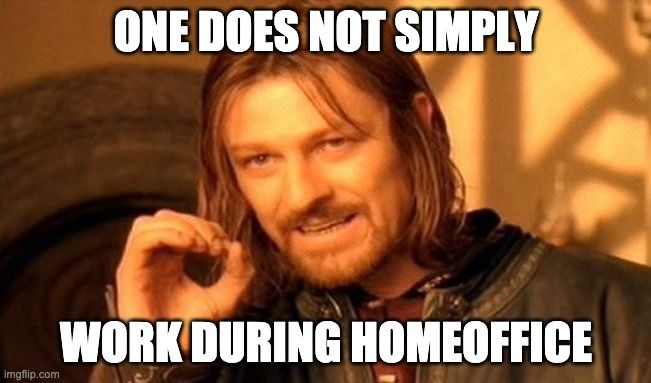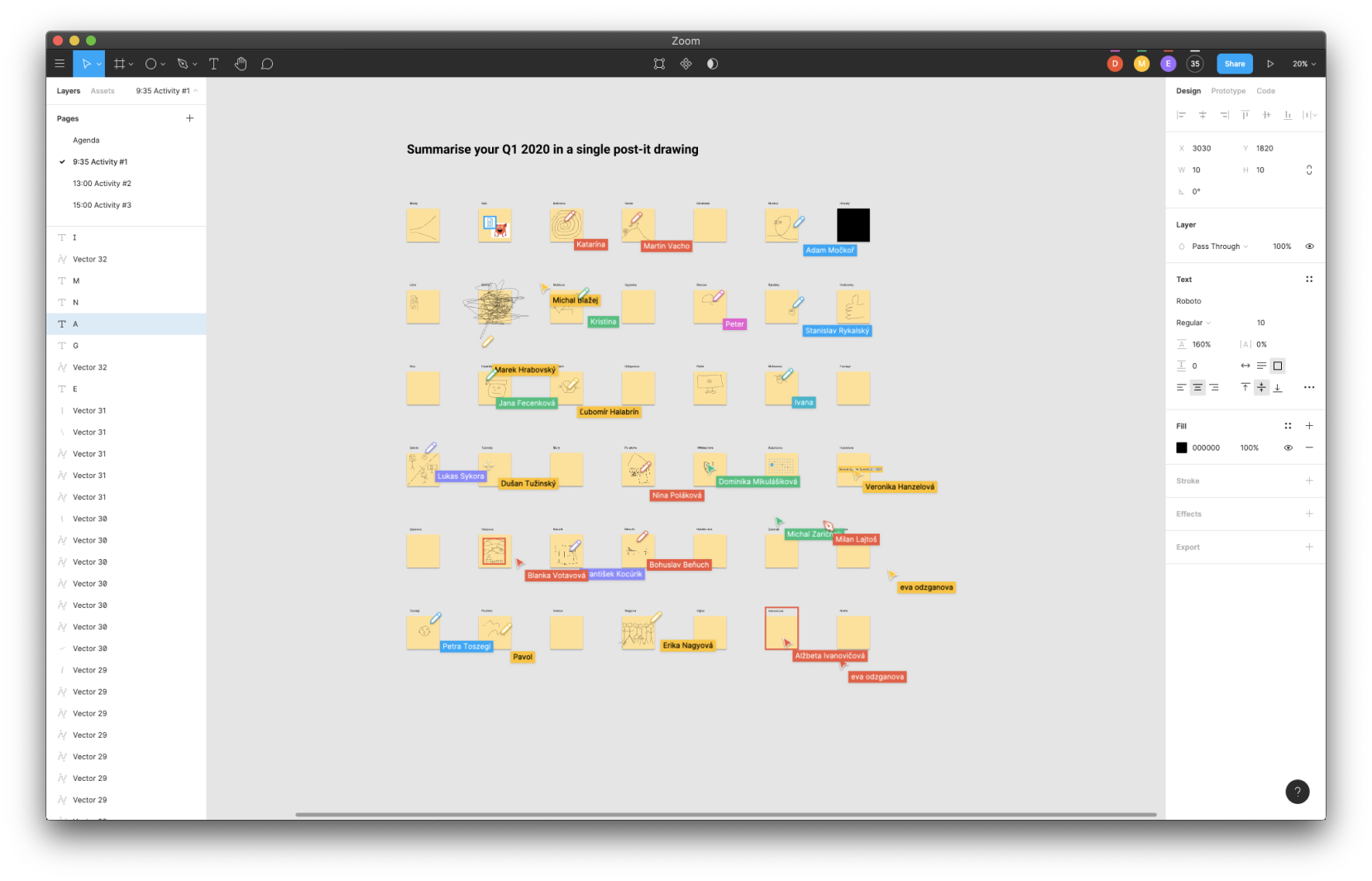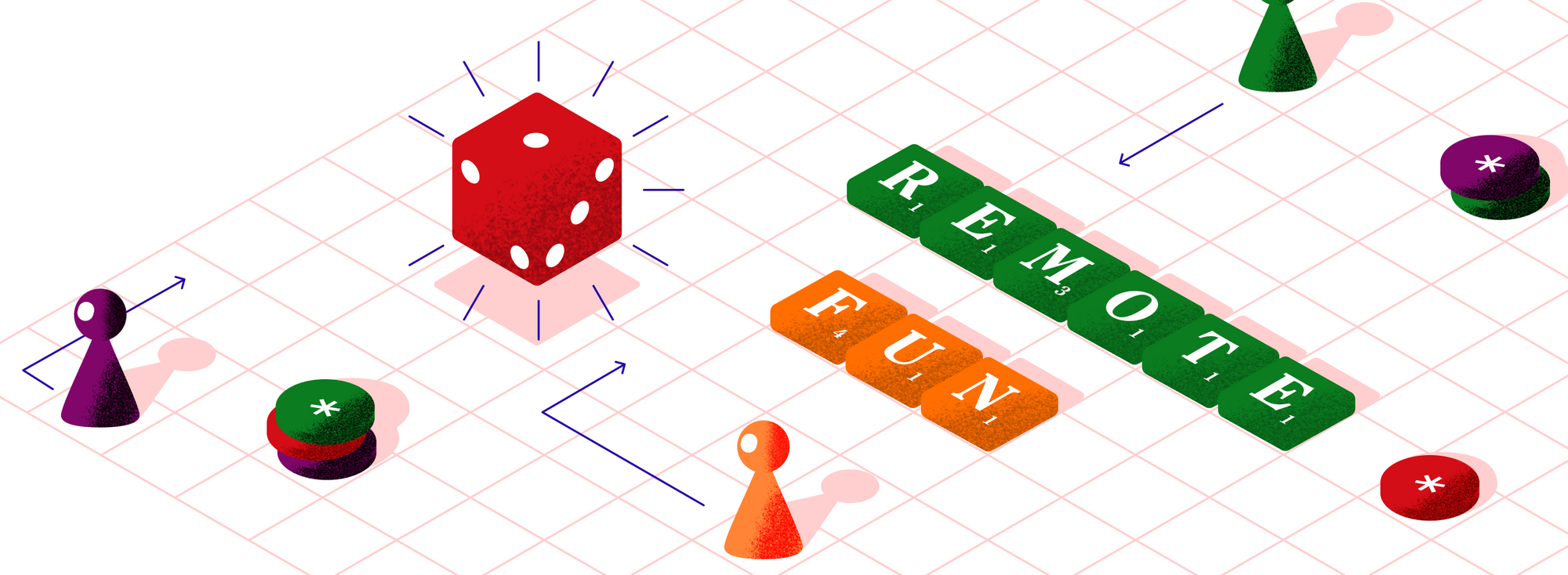I am writing this and working from home as are my Beetle colleagues. As is the majority of Slovakia and most people across the globe. Social distancing is the norm right now and despite it being proven effective to slow down the spread of COVID-19, it still has large implications in the economy and people's well-being.
A study from 2015 points out that social isolation presents health risks similar to those of obesity, smoking and physical inactivity. Although such risks are more prominent when exposed to longer periods of social isolation — which we hope will not be the case — keeping yourself close to others can provide you with short and long term benefits. Human contact combats stress and anxiety by triggering the release of a "cocktail" of neurotransmitters and, like a vaccine, they protect you now, in the present, and well into the future.
Sharing a physical space allows people to not only shower themselves with oxytocin through social interactions, but it also provides simple means for working as a team. Another study shows there is a direct connection between teamwork and well-being. The perception of working as a team brings people higher levels of well-being, job satisfaction and organisational commitment, as opposed to those that work alone or in quasi teams. The lack of an office space should not stop you from reaping all these benefits. Technology is here to provide us with some decent alternatives.
For us, LB* is not just a company, it's our second home. On a regular basis, you would find people hanging out at the office or each other's houses well past working hours or during the weekend. Space and time are not boundaries for Beetles.

We don't want to lose the essence of our company during this challenging time and although the team has such close relationships, it's necessary to create a structure that will constantly kindle the fire. That's where our Spirit guardians come in. This is a team of individuals with a shared goal of keeping spirits high with years of knowledge about what works for us and what doesn't. And based on that, here are some of our tips on how to help your team stay strong, motivated and have some fun.
1. Incorporate fun & relaxing rituals into teams’ routine
There's a reason why agile companies incorporate rituals into their way of working. The certainty and regularity keeps people motivated and aligned towards a common goal. During regular times, we run a handful of rituals every sprint – our UX designer Petra describes them well in her blogpost about Lean UX rituals. And now it is more important than ever to keep people moving forward and light-hearted.
Each team should follow a routine that is as similar to their regular routine as possible. Not being physically in the same room should not have any influence over it. It's business as usual, with a bit of extra fun added to the mix. Here is how a week looks like for one of our teams.

At LB*, some agile squads have a morning coffee that members attend every day. Look at it as a standup, but with coffee and breakfast. Even internal teams like finance or marketing, who don't always follow agile processes, incorporated them immediately. It is also a chance for you to capture ridiculous pictures you can use to blackmail your colleagues later. Throughout the day, teams have sparring sessions and other ad-hoc meetings just as regular days. To make it easier, you can have a virtual room that simply mimics any physical space that you already have at your office, for example we have a lunch room and a smoking terrace. One of the advantages of working online is that you will never again run out of meeting rooms!
2. Promote healthy boundaries of working hours
Taking a home office used to be considered a joke:

At first, working 100% of the time from home raised fears of us being able to still work agile and honour our commitments. As a data-driven company, we not only track all the products we launch, but we also track everything we do. During our first week of quarantine, it was obvious that our productivity had taken a hit. Our system recorded a drop of around 10% in productivity, compared to the average of the 6 previous weeks.
That did not last long, however. From the second week, we started to observe the completely opposite effect. People were working more than usual. As researchers, we investigated deeper and found out that working from home eliminated some of the boundaries we previously had. For example, there was no more clear start and end of the workday, or lunch time tends to be shorter since people did not waste time going to restaurants anymore. Although this might be the ultimate capitalist dream for some companies, for us it triggers the Spirit guardians to encourage people to adopt a stronger routine and focus more on their well-being.
If you don't already track your team's productivity with tools such as Toggl or Harvest, consider finding a way to investigate if they are achieving a good balance of work and life. Actively encourage them to follow a routine, take breaks and only plan for the sprint as they would usually do while working at the office.
3. Get everyone together at least once a week
Smaller teams with strong rituals is the way to go to stay productive and motivated. But what about the company culture? When the same group of people meet each other over and over, the bigger sense of belonging and culture starts to fall through the cracks.
Just as it would happen organically at an office situation, it's important that people who don't work together often have a chance to meet and interact for a while. For us, that means a weekly company-wide standup, plus some learning and fun activities.
Our week starts with a Monday standup where each team presents what they are doing, for up to 3 minutes. There is also a company status check and we announce any news or activities planned for the week.
Friday afternoon is reserved for growth and team bonding. Our regular schedule would include weekly lectures and workshops with everyone in the same room. This tradition survives, but instead of a physical room and a whiteboard, we use Zoom and Figma.
On top of that, to make up for the lack of day-to-day fun interactions, we run activities that push people to meet strangers. We split the whole team into groups of up to 8 people and they meet in a virtual room without any prior knowledge of who would be in the same room. While in the room, they have a Figma playground where they can play some games that encourage them to bond.

Regardless of which activities you decide to do, make sure that you are building on the company culture and involving everyone. For us, Growth and Empathy are our company values, so we focus on learning and bonding activities. For you, it may be something else, but don't let physical limitations stop you from making it regular and for the whole team. Fixed time slots for your activities foster a sentiment of certainty that helps reduce anxiety and give people something to look forward to.
4. Keep the activities coming
People get bored and distracted easily. At home, they have plenty of sassy evildoers like kids, dogs and Netflix, all fighting for their attention. Keeping things always the same leads people to look for other things to do. You gotta keep people on their toes and do a wide range of different events and activities. Here are a few examples of activities we have hosted so far:
- Virtual birthday celebrations
- Shared online kitchen for cooking and eating together
- Drawing games and online board games
- Thematic team building party with DJs
- Fun quizzes with trivia about team members
- Meet the strangers speed-dating with random colleagues
Although you can dedicate a team to creating and managing the activities, let everyone propose ideas and build a sense of ownership. Creating a public backlog has proven very effective for us – currently, there are ideas like: make your own board game night, social distanced movie night and LB* quiz night.
For publicizing the events and getting many people to attend, you can make a public schedule to let everyone know what is coming and on top of that you can let your wild side take over when teasing people right before the event happens.

5. Leave no soldier behind
It's common to disregard introverts when creating social activities. The mindset often is that introverts don't need social interaction, thus leading people to craft events and activities that mostly benefit those with extroversion personality traits. However, as we already discussed at the beginning, poor social interaction has a direct impact on short and long-term health risks.
The assumption that introverts don't need social interaction is unfounded. They are the happiest when they are in contact with other people but on their own terms. The two main factors that influence the relationship of introversion and happiness are the quality of the interaction and the capability of dictating how these interactions should happen.
For example, if you are hosting an event for the whole company, instead of forcing people to ask questions vocally in front of everyone, give them the option to submit anonymous questions via Sli.do; allow them to react non-verbally. Or let's say you plan a digital party for the whole team, in that case you can create a separate room for those who wish to play some games instead of talking, drinking and dancing. Finally, maybe you don't always need to have events for the whole team, you can have smaller activities that will have a higher quality of social interaction, e.g. a circle of trust where people can share their feelings without judgement or pressure.
Next time you brainstorm and prepare activities to keep your team in high spirits, try to do a quick assessment of which personality traits you have in your team and make sure that you will cater for both extroversion and introversion.
6. Get creative
Finally, don't get constrained by time and space. People can come up with crazy ideas and have loads of fun. Designers thrive when they have limitations and well-defined challenges, so this is the perfect time to let your creative juices flow.
There's already a lot of creativity going around out there, for example playing checkers, pictionary, and 15-second animals on Figma.
What are you doing to keep your team in high spirits? Share some ideas with us! We'd love to try it out on our team too.
If you don't know where to start, you can try our Figma playground with a few games that worked for us perfectly:
Stay safe and have some fun!



